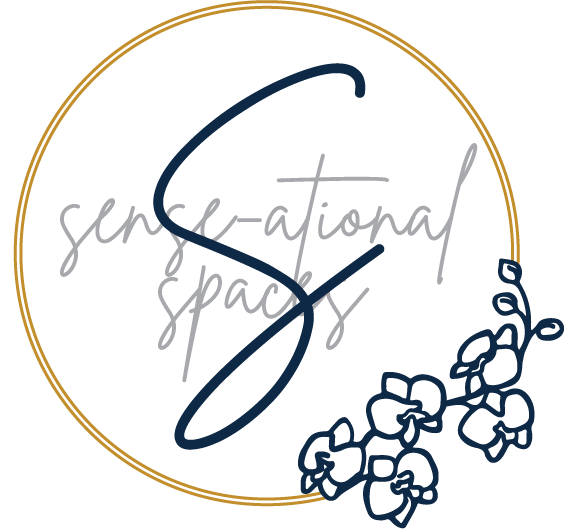Understanding Primitive Reflexes: Part 2
At SENSE-ational Spaces, we know that understanding why a child may struggle is only half the story. In Part 1 of this blog series, we explored the basics of primitive reflexes: what they are, why they matter, and how retained reflexes can impact development. In Part 2, we will focus on the next step: what we can do!
Play-Based Activities
(Amadeo, 2023; Hill & Harrington, 2023; Kid Therapy, 2023)
Disclaimer: The activities and strategies outlined in this blog are intended for general educational purposes and should not be used as a substitute for professional evaluation or individualized therapy. Reflex integration can vary greatly from child to child, and not all children exhibiting related challenges have retained reflexes. A comprehensive assessment by a licensed occupational therapist or qualified developmental professional is essential to determine specific needs and create a personalized intervention plan. If you have concerns about your child’s development or suspect retained reflexes, we strongly recommend consulting with a pediatric occupational therapist.
Moro Reflex
(Startle Reflex)
Why it matters: Helps develop emotion regulation and adaptability to sensory input.
When retained: Often linked to heightened anxiety, sleep challenges, and overactive fight-or-flight responses.
Activities to Try:
Starfish Exercise
From a seated or standing position, cross arms and legs tightly (like a curled-up starfish), then stretch them out wide to form a star shape. Repeat slowly 5–10 times, alternating which leg and arm are on top.Slow Rocking in a Hammock or Therapy Swing
Gentle, rhythmic vestibular input helps calm the nervous system and reduce startle reactivity.Deep Pressure & Breathing
Combine gentle weighted blankets or deep pressure squeezes with slow breathing (4 seconds in, 6 seconds out).
Palmar Grasp Reflex
Why it matters: Necessary for developing fine motor control and functional grasp patterns.
When retained: Can lead to handwriting difficulties, poor pencil grip, and fatigue during fine motor tasks.
Activities to Try:
Therapy Putty Play
Squeeze, pinch, and roll putty to strengthen intrinsic hand muscles.Tweezer Games
Use tongs or tweezers to pick up small objects like pom-poms or beads; great for finger isolation and control!Clothespin Tasks
Open and clip clothespins onto the edges of boxes, cards, or clothing to build grasp strength.
Asymmetrical Tonic Neck Reflex (ATNR)
Why it matters: Supports early hand-eye coordination and visual tracking.
When retained: Interferes with midline crossing, writing fluency, and coordination.
Activities to Try:
Lizard Crawl
Lying on the stomach, lift one arm and the opposite leg while turning the head toward the extended arm. Hold briefly, then switch sides. This challenges rotation and coordination.Cross-Crawl Marching
March in place, touching the right elbow to the left knee and vice versa. Slow, rhythmic movements help build midline awareness.Horizontal Figure-8 Drawing
Have children trace or draw large figure eights on paper or a wall surface. Add visual tracking for extra integration power!✨ Tip: Use music to pace movements and maintain engagement. ✨
Symmetrical Tonic Neck Reflex (STNR)
Why it matters: Helps with posture, crawling, and the transition from floor to upright positions.
When retained: May show as poor sitting posture, slumping, or difficulty staying still during desk tasks.
Activities to Try:
Cat-Cow Stretch (Quadruped Rocking)
From hands and knees, alternate arching and flattening the back. Add head movement - chin to chest (flexion) when arching back and looking up (extension) when flattening!Crawling Through Tunnels
Set up obstacle courses that encourage crawling, which activates the upper-lower body connection needed for STNR integration.Kneeling Ball Toss
Toss and catch a ball while kneeling, promoting core engagement and limb coordination.
Tonic Labyrinthine Reflex (TLR)
Why it matters: Contributes to posture, balance, and spatial orientation.
When retained: May result in poor balance, toe-walking, or excessive stiffness.
Activities to Try:
Superman Pose
Lying on the belly, lift arms, legs, and head simultaneously. Hold for 10–15 seconds to improve extensor strength and control.Banana Curl
On the back, curl arms and legs inward while tucking the chin to the chest. Repeat alternating Superman and Banana for vestibular input.Balance Board Games
Use a wobble board or balance pad to challenge postural control and equilibrium!
Spinal Galant Reflex
Why it matters: Supports spinal mobility and pelvic control.
When retained: Can contribute to poor sitting posture, fidgeting, and bedwetting.
Activities to Try:
Side-to-Side Bending
Standing tall, reach one arm overhead and lean to the opposite side. Repeat slowly side to side, engaging the lateral movement of the trunk.Hip Circles or Hula Hooping
Encourages controlled pelvic rotation and spinal movement.Animal Walks (Bear, Crab, etc.)
Whole-body coordination builds core strength and decreases hyperactivity linked to this reflex.
Integrating Reflex Work into Everyday Play
Reflex integration is most effective when it's consistent, purposeful, and, most importantly, fun. Children are more likely to benefit from movement-based strategies when they’re engaging and feel like play. Occupational therapists often combine sensory input (vestibular, proprioceptive) with reflex activities for optimal outcomes.
At SENSE-ational Spaces, our therapists are trained to assess and support reflex integration through personalized therapy plans and playful, structured environments. If you suspect your child may be struggling with retained reflexes, we’re here to help.
Stay tuned for future posts in our series, where we’ll continue exploring ways to support your child’s development through movement, environment, and play!
Let’s move forward, together.
References
Amadeo, W. (2023, February 9). Activities to help with primitive reflex integration. Heal Thyself Institute. https://healthyselfswfl.com/blog/activities-to-help-with-primitive-reflex-integration
Hill, J., & Harrington, R. (2023, June 22). Primitive reflexes: What they are & how to integrate them. Harkla. https://harkla.co/pages/primitive-reflexes
Kid Therapy. (2023, April 24). Primitive reflex integration exercise ideas. Kid Therapy. https://kidtherapy.org/helpful-articles/primitive-reflex-integration-exercise-ideas/







